As the winds begin to shift from the north, the crisp autumn air settles in, and fields turn golden, hunters across North America eagerly anticipate the start of waterfowl season. Goose hunting offers a thrilling experience with opportunities to target various species of geese.
Understanding the characteristics and behaviors of each species can increase your odds of success. Here, we highlight the different types of geese and provide insights into hunting locations, conservation efforts, and effective hunting strategies.
Canada Goose
Canada geese are ubiquitous across North America, known for their distinctive black heads and white chinstraps.
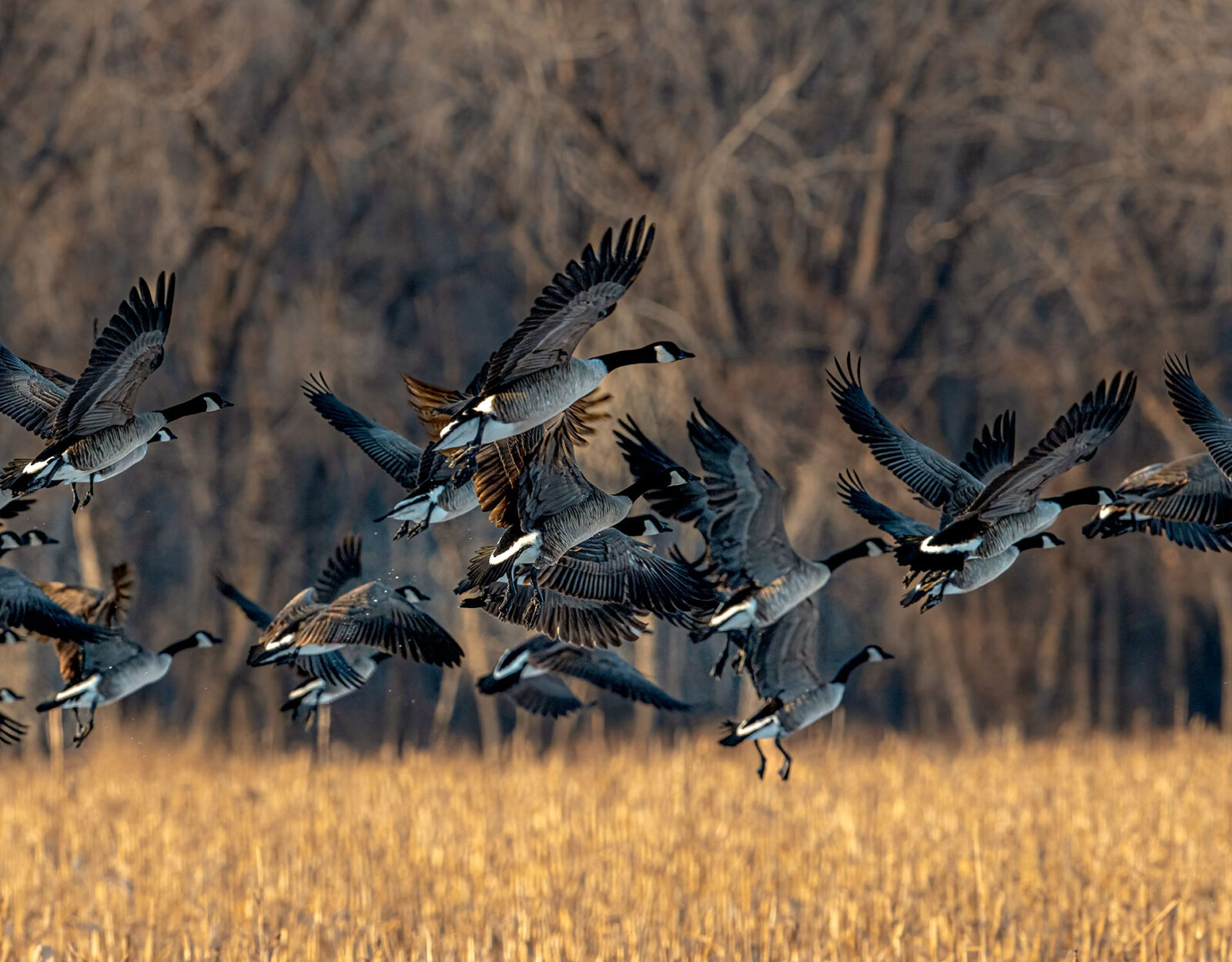
Canada Goose Subspecies
Canada geese are divided into seven subspecies. The giant Canada goose is the largest, often found in southern Canada and the northern United States. On the other end of the spectrum, the cackling goose, commonly known as a cackler, was formerly considered a Canada goose subspecies but is now recognized as a separate species due to its smaller size and different vocalizations.
Other subspecies include the Atlantic Canada goose, the interior Canada goose, the lesser Canada goose, the dusky Canada goose, and the Vancouver Canada goose, each adapted to specific regions and habitats across North America.
Canada Goose Habitat
Canada geese migrate along all the major flyways, with certain subspecies favoring different flyways. These geese are found in a range of habitats, from urban areas to rural farmlands. Prime hunting locations include the Central and Mississippi Flyways, where hunters can capitalize on their migratory patterns.
Prime Canada goose hunting locations include the Central and Mississippi Flyways, where hunters can capitalize on their migratory patterns.
Canada Goose Hunting Tactics
Scouting is going to play a critical role in goose hunting. It’s important to understand the daily movements of Canada geese. Geese spend the night resting on ponds, lakes, or rivers, a behavior known as roosting. At first light, the birds often move to feed on dryland, which can include crop fields or pasture land. Popular crops vary by location and time of year, but common crop types include corn, wheat, barley, peas, oats, soybeans, and alfalfa. Use the Hunt App’s Crop Distribution Map Layer to locate these fields.
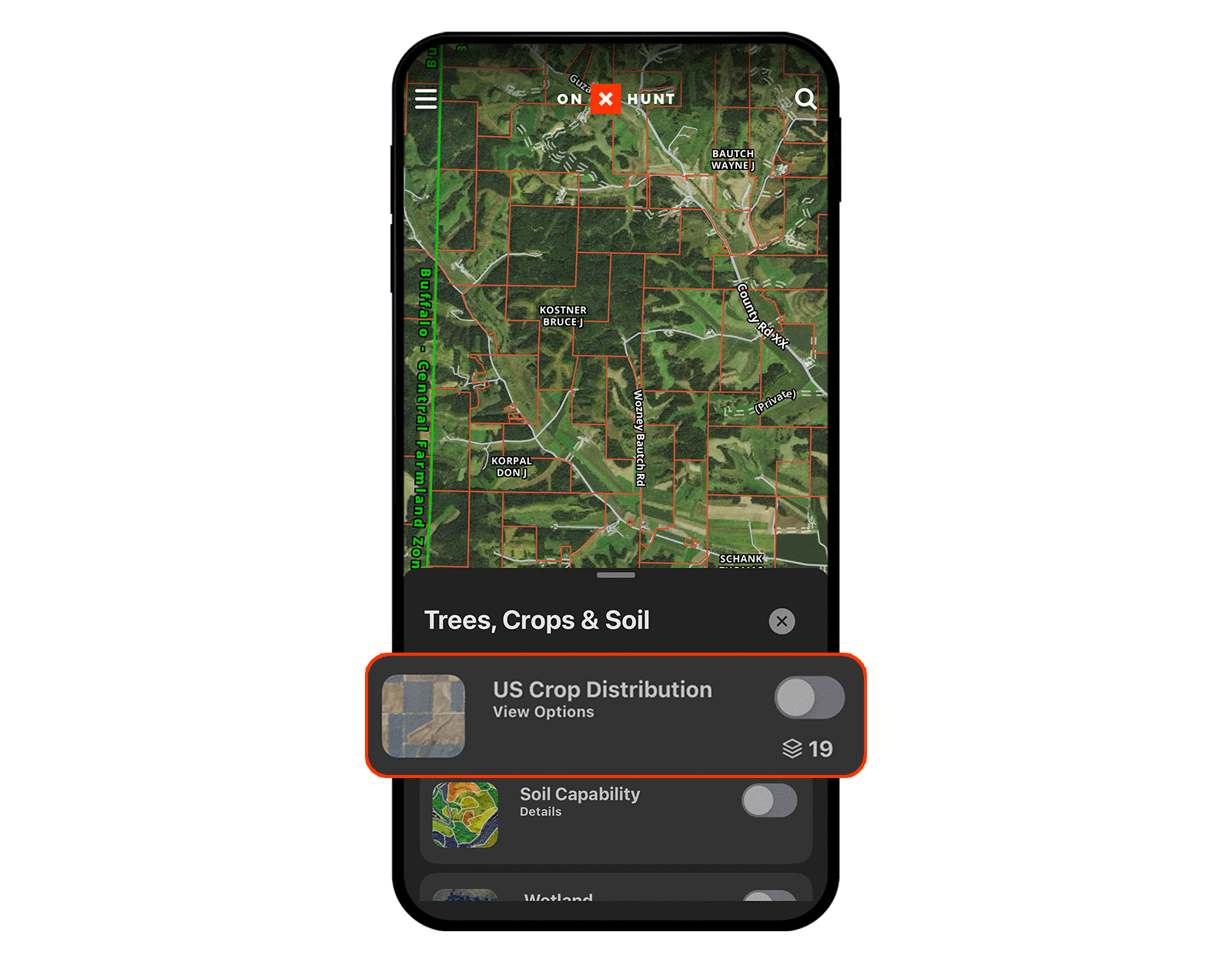
Use the Hunt App’s Crop Distribution Map Layer to locate crop fields where geese are likely to feed.
Geese will feed for a period of time (how long they feed will depend on the weather), before heading back to water to “loaf,” a term that describes a bird’s behavior when they’re relaxed and not focused on feeding or breeding. Named for this behavior, a midday spot a goose chooses to hang out in is called a “loaf” and can be a great place to target birds eager to get back to the water.
In the afternoon, the birds will move from the loaf to a field to feed. This is often, but not always, the same field they fed at in the morning. Identifying what the birds’ daily routine looks like will aid in finding the best area to hunt them.
Snow Goose
Snow geese are renowned for their large flocks and liberal hunting seasons, making them a popular target among waterfowl hunters. Snow geese exhibit striking color variations, with white and blue morphs present within the population.
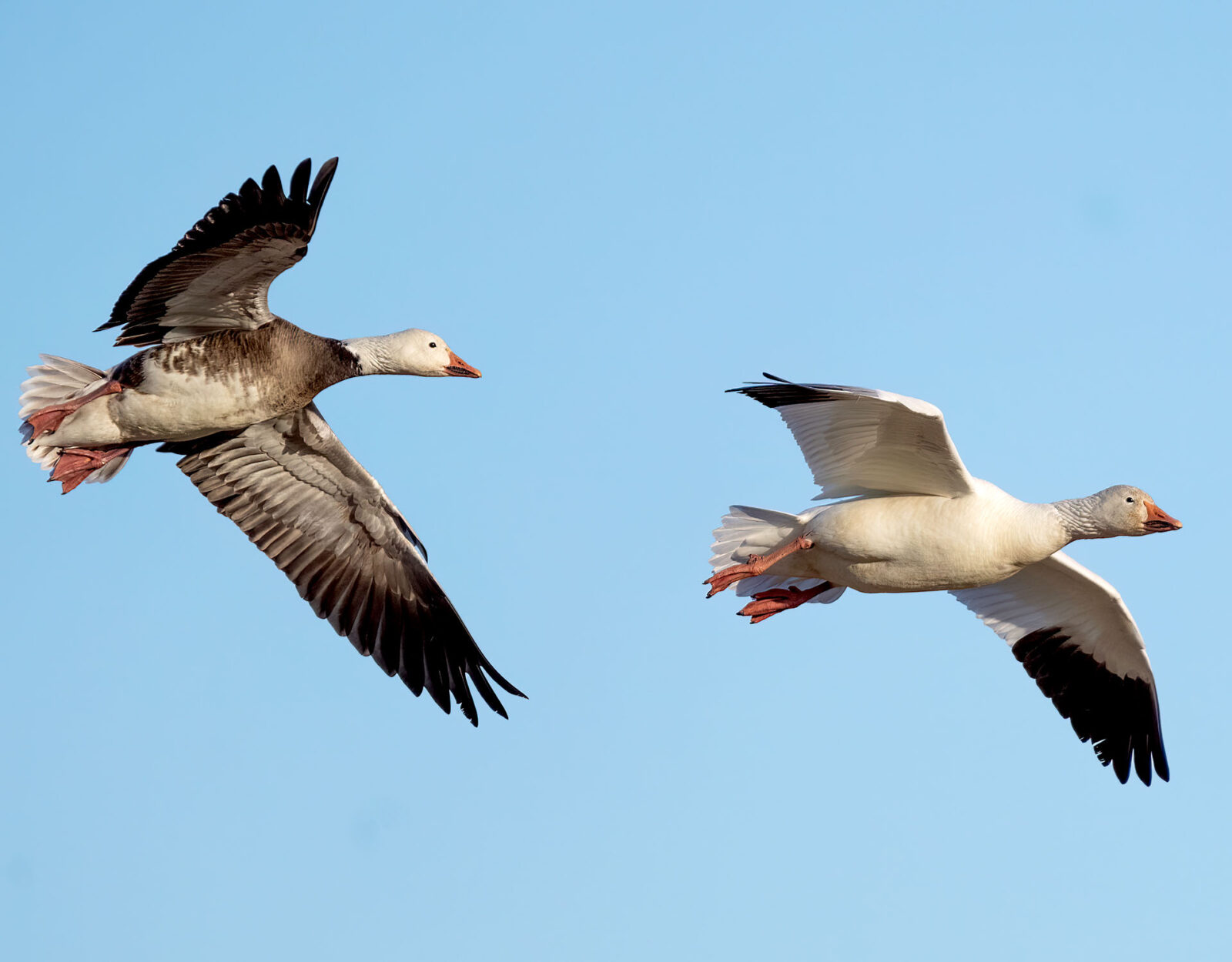
Snow Goose Subspecies
There are two subspecies: the lesser snow goose and the greater snow goose. While not a snow goose, the Ross’s goose, a smaller relative, often migrates and winters alongside snow geese.
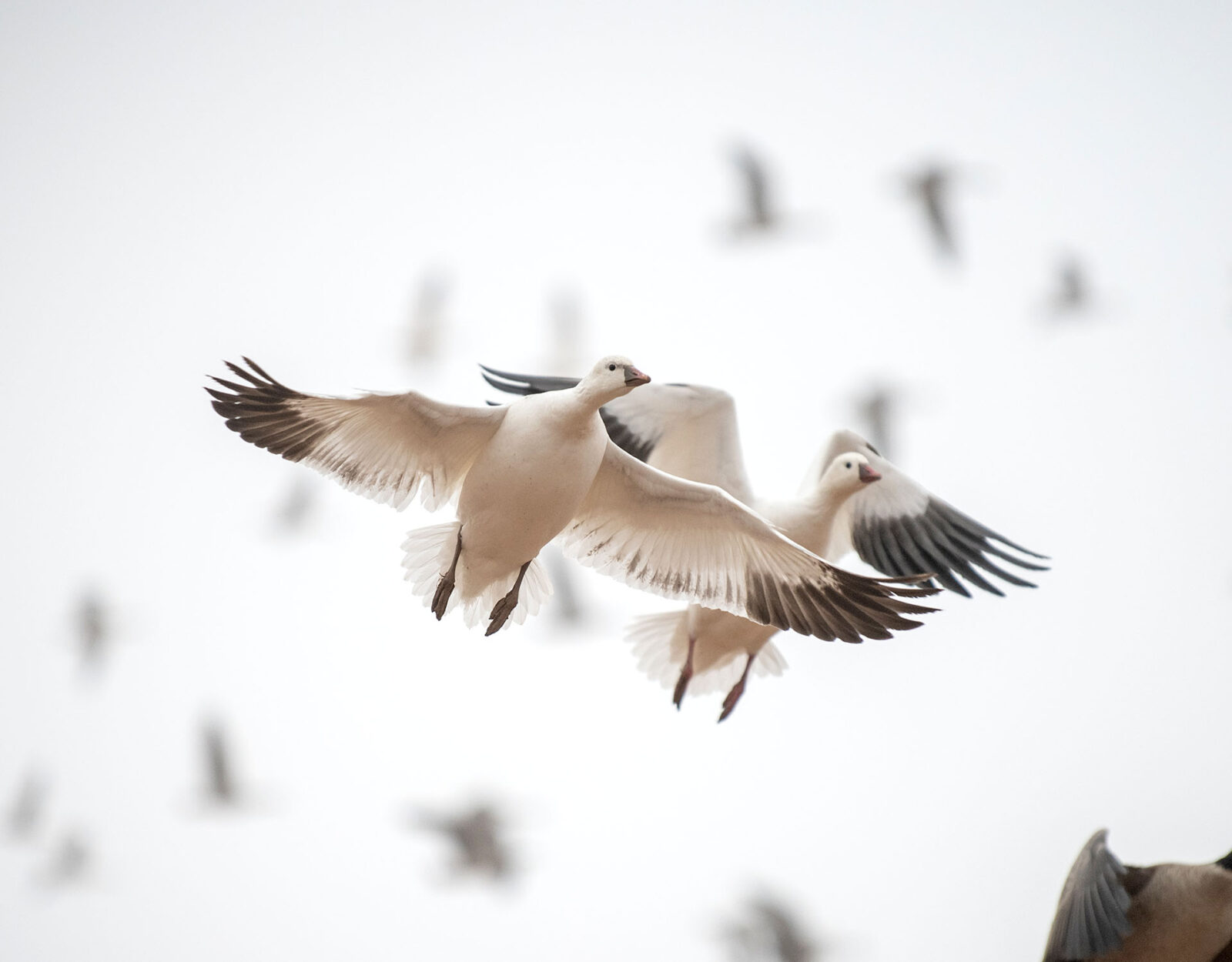
Snow Goose Habitat
The lesser snow goose breeds primarily in the central and western Arctic, while the greater snow goose breeds in the eastern Arctic. During migration, snow geese and Ross’s geese travel in large flocks along the Mississippi and Central Flyways.
The Mississippi Flyway is particularly significant for the greater snow goose, which migrates from its breeding grounds in the eastern Arctic to wintering areas in the southern Mississippi Delta.
The Central Flyway is more commonly used by the lesser snow goose and Ross’s goose, with major wintering areas in Texas and the Gulf Coast.
Snow geese are known for their long migrations, sometimes covering thousands of miles between their breeding and wintering grounds.
The Mississippi Flyway is particularly significant for the greater snow goose, which migrates from its breeding grounds in the eastern Arctic to wintering areas in the southern Mississippi Delta.
Snow Goose Hunting Tactics
Decoy setup plays a critical role in snow goose hunting. Given the massive flocks these birds travel in, hunters often use hundreds, if not thousands, of decoys to create a convincing spread. Silhouette and sock decoys are particularly popular for snow goose hunting, as they are lightweight and can be easily transported and set up in large numbers. Incorporating motion decoys, such as flapping wing decoys or rotary machines, can add movement to further attract passing flocks.
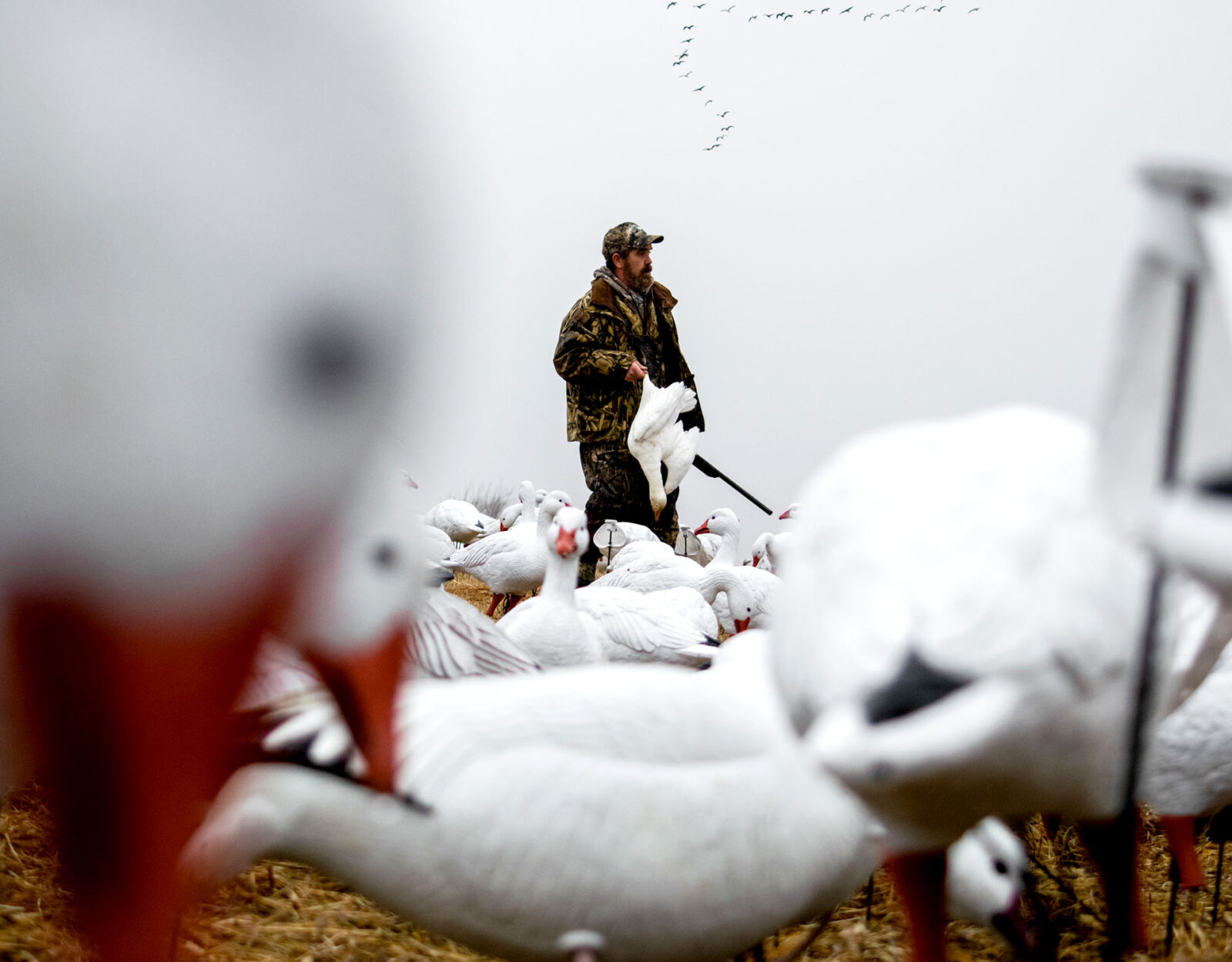
Hunting snow geese during the spring conservation season is the most popular time to hunt because it offers liberal limits with many states imposing no daily limits. In addition, hunters are allowed to use electronic callers, which are more effective than hand calling.
Timing the migration means the difference between watching empty skies and having so many birds they blot out the sun. To find the best time to go hunting in your chosen area, use the Recent Imagery Tool, which brings information about current recreation conditions to a waterfowler’s fingertips via medium-resolution (5-meter) satellite imagery updated every two weeks. With a near-real-time view and the ability to scroll back in time, hunters can see valuable information such as water levels in ponds, rivers, and impoundments, ice out status, and snow cover.
To find the best time to go hunting in an area, use the Recent Imagery Tool (available to Elite Members), which shows satellite imagery dating back to March 2023, updated every two weeks.
Greater White-Fronted Goose
The greater white-fronted goose boasts a distinctive appearance that sets it apart in the waterfowl world. Commonly referred to as “specklebellies” or “specks” due to the barred or speckled patterning on their undersides, these geese display a subtle blend of gray, brown, and white feathers on their bodies.
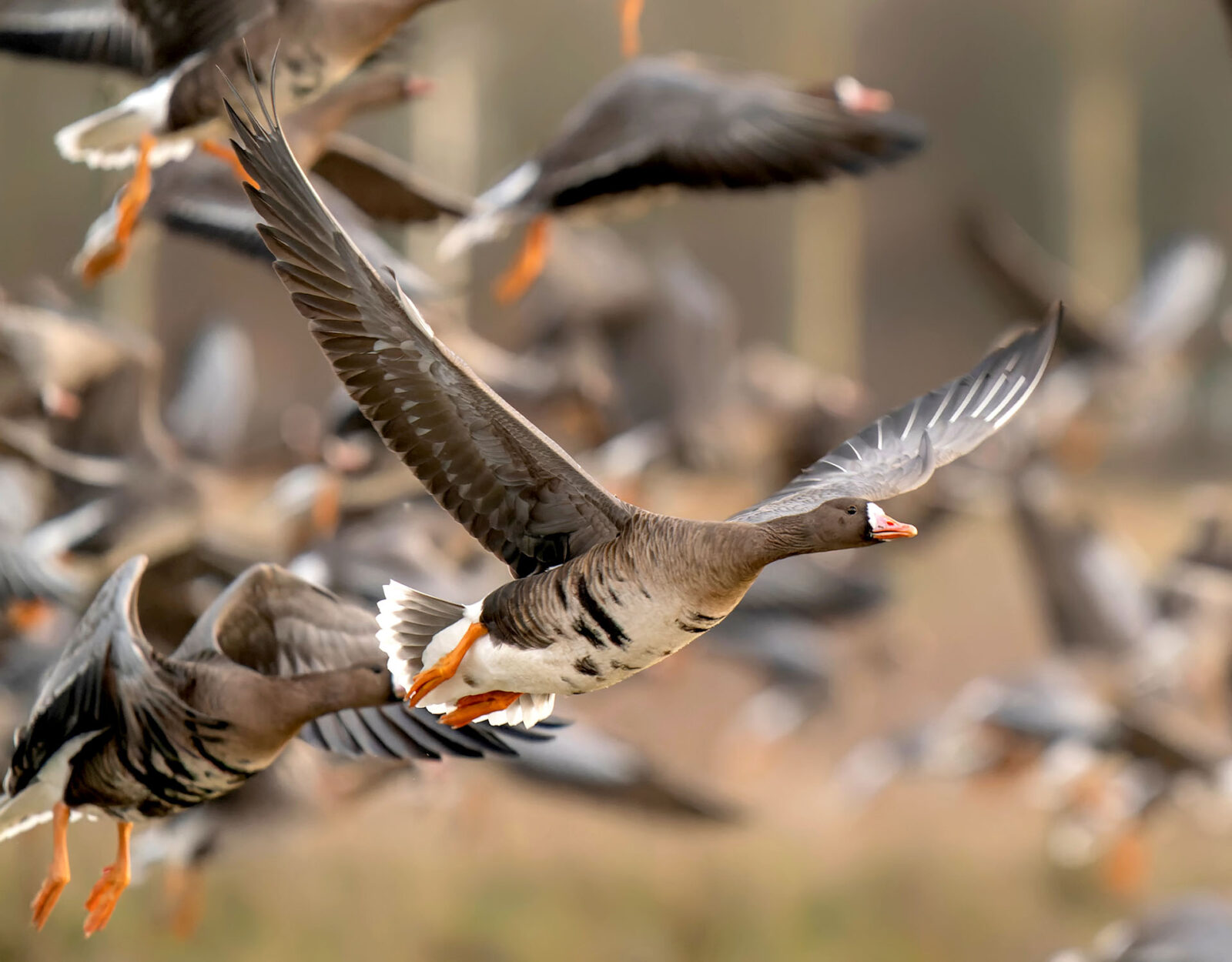
Their most prominent feature is the distinctive white patch encircling the base of their bill, from which they derive their name. This characteristic “white front” is a defining trait of the species and serves as an identifier in the field. Additionally, greater white-fronted geese often exhibit subtle variations in plumage, with some individuals displaying darker or lighter coloration, adding to the intrigue of these captivating birds.
Greater White-Fronted Goose Habitat
Greater white-fronted geese breed in the Arctic tundra of Alaska and northern Canada, migrating south to winter in the Central Valley of California, Texas, and northern Mexico. They predominantly use the Central and Pacific Flyways during migration. The Central Flyway sees them passing through the Great Plains, while the Pacific Flyway includes routes along the western coast of North America.
Greater White-Fronted Goose Hunting Tactics
Specks are easily callable, and in concert with silhouette, shell, or full-body decoys, they will readily come to your spread. To mimic their distinctive clucks, yodels, and murmurs, a dedicated speck call is important.
Most specklebelly hunting is done either on a dry or flooded agriculture field. When scouting, it’s important to denote where the birds are located on the field. You can mark these areas on the Hunt App with Waypoints, using custom icons and notes to keep your pins organized for future reference. After marking the feeding birds, if they’re on private land, use onX Hunt’s Private Lands Map Layer to find the property owner and secure permission to hunt.
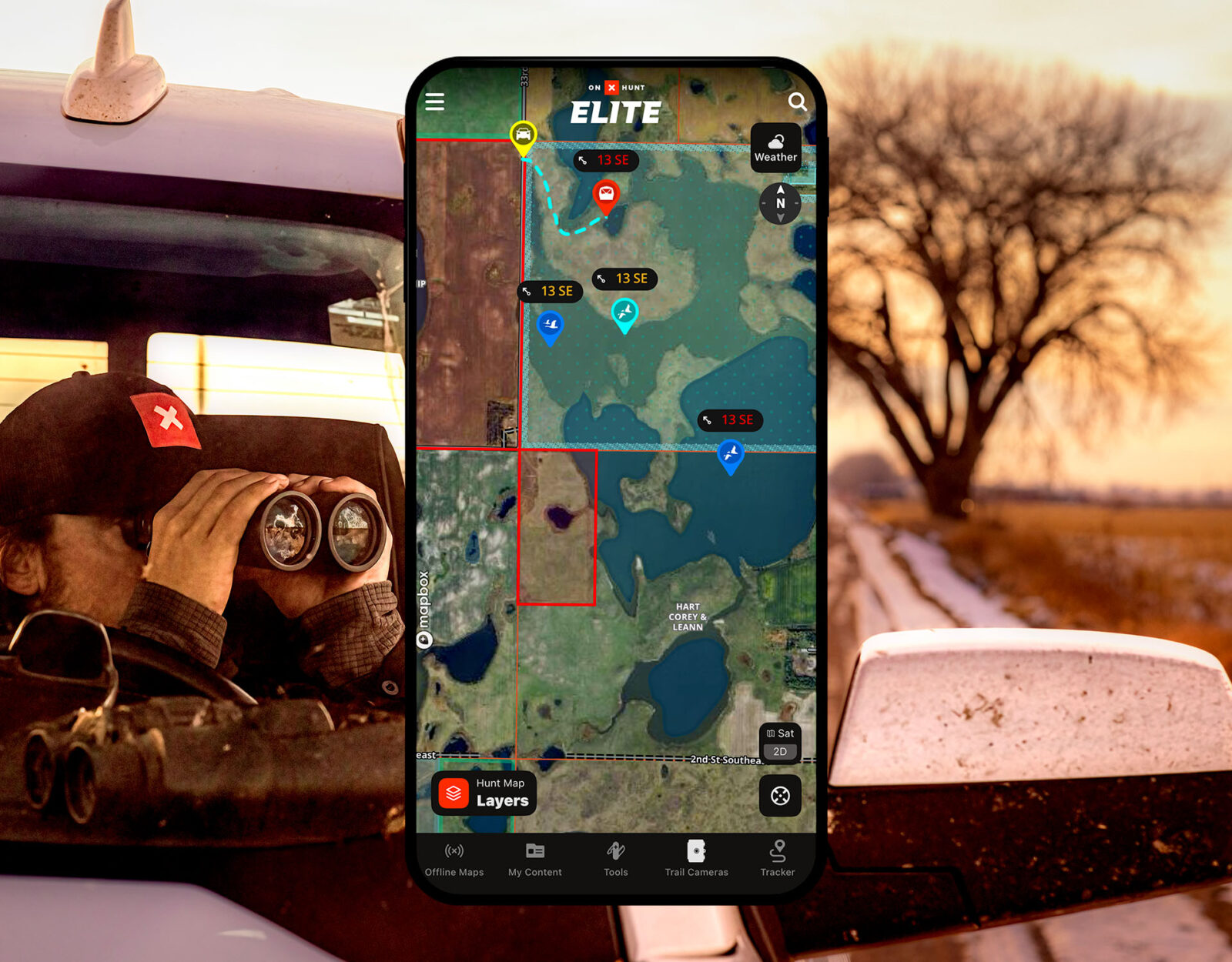
Other Notable Goose Species
Brant Goose
Brant geese are small, dark geese known for their distinctive black necks and white patches on their flanks. These birds breed in the Arctic tundra of North America and Siberia and migrate south to winter along the coasts of North America and Europe.
Along the Pacific coast of North America, brant geese are commonly found in areas such as Alaska, British Columbia, Washington, and California. Along the Atlantic coast, they frequent regions along the eastern United States and parts of Canada.
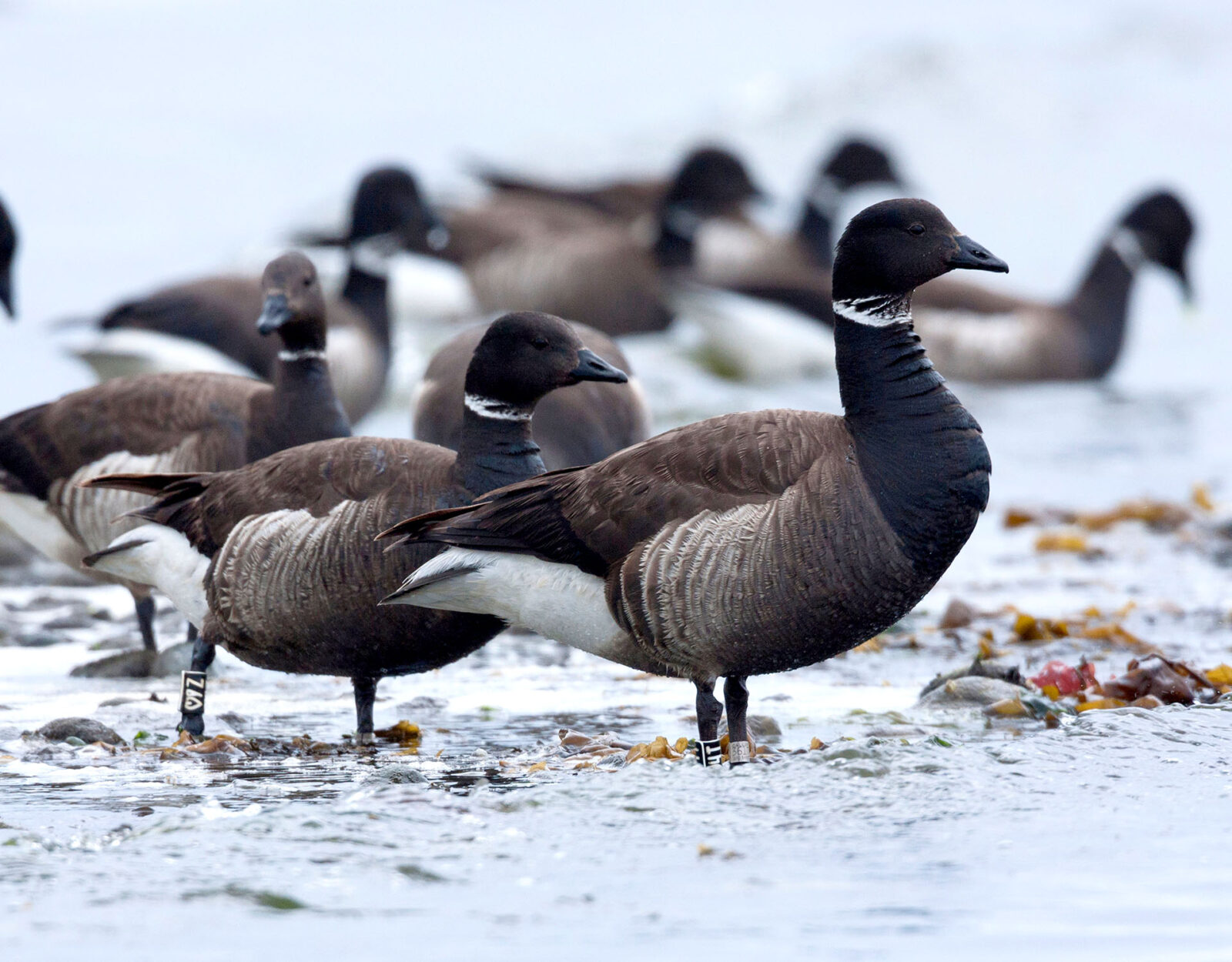
There are four distinct populations of Brant recognized in North America:
- Atlantic Brant
- Eastern High Arctic population
- Black Brant
- Western High Arctic population
Brant geese’s migration patterns and wintering grounds make coastal areas prime hunting locations. While their populations have faced challenges due to habitat loss and overhunting in the past, conservation efforts have helped stabilize their numbers, making regulated hunting opportunities available.
Brant geese’s migration patterns and wintering grounds make coastal areas prime hunting locations.
Emperor Goose
Emperor geese, named for their majestic appearance and regal bearing, are native to the remote regions of Alaska’s Aleutian Islands and neighboring Russia.
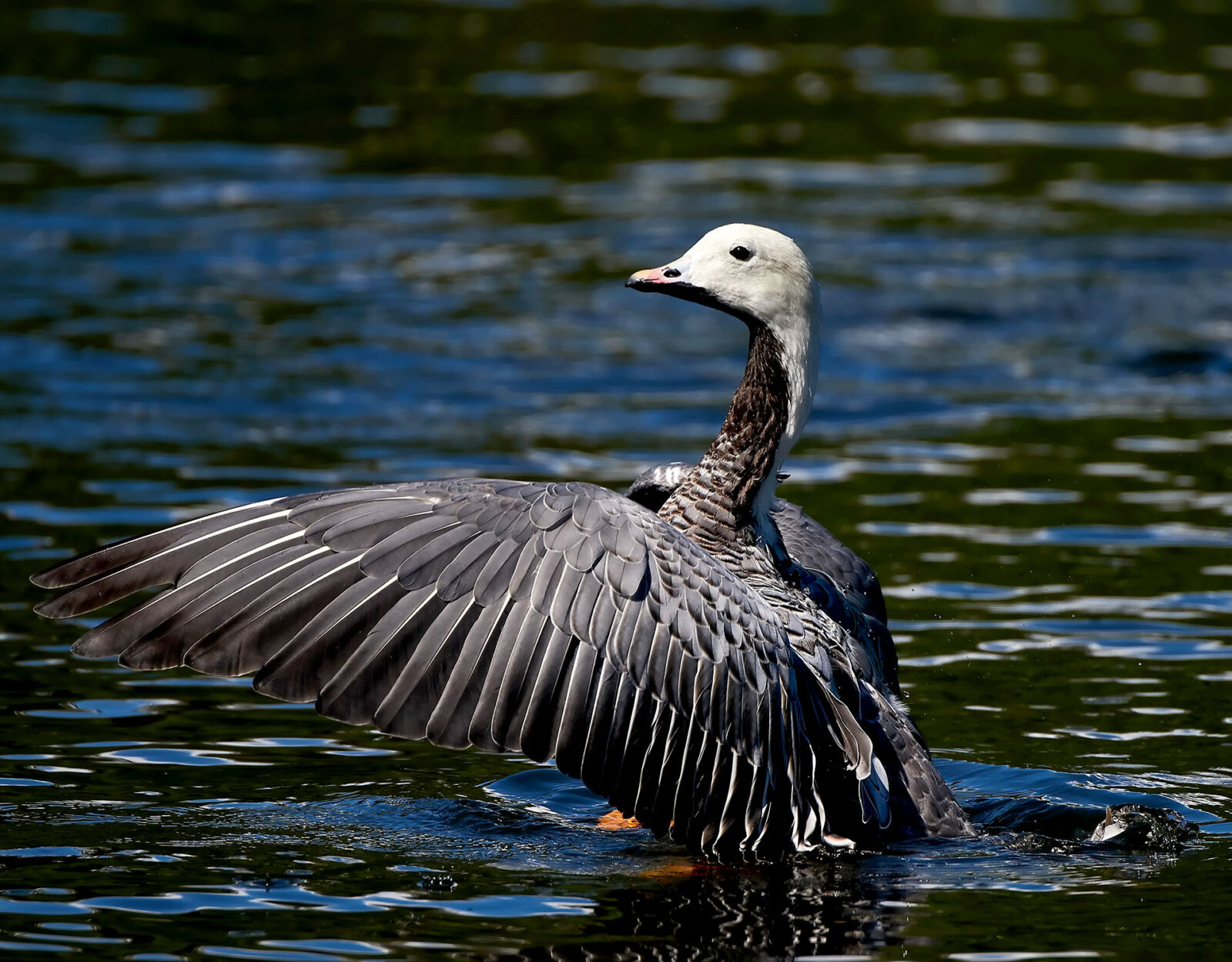
Recognized for their striking white heads and distinctive black neck collars, emperor geese are a species of utmost significance ecologically and culturally. Due to overhunting and habitat degradation, emperor geese faced a severe decline in the 20th century, leading to their classification as a threatened species under the U.S. Endangered Species Act in the 1970s.
Conservation efforts, including habitat protection and regulated hunting, have contributed to the gradual recovery of emperor goose populations. Today, hunting opportunities for emperor geese are limited and highly regulated to ensure the species’ continued survival.
Conservation efforts, including habitat protection and regulated hunting, have contributed to the gradual recovery of emperor goose populations.
Barnacle Goose
Barnacle geese feature black and white plumage with distinctive barred markings on their undersides, and breed in the Arctic tundra of Greenland, Iceland, and northern Europe.
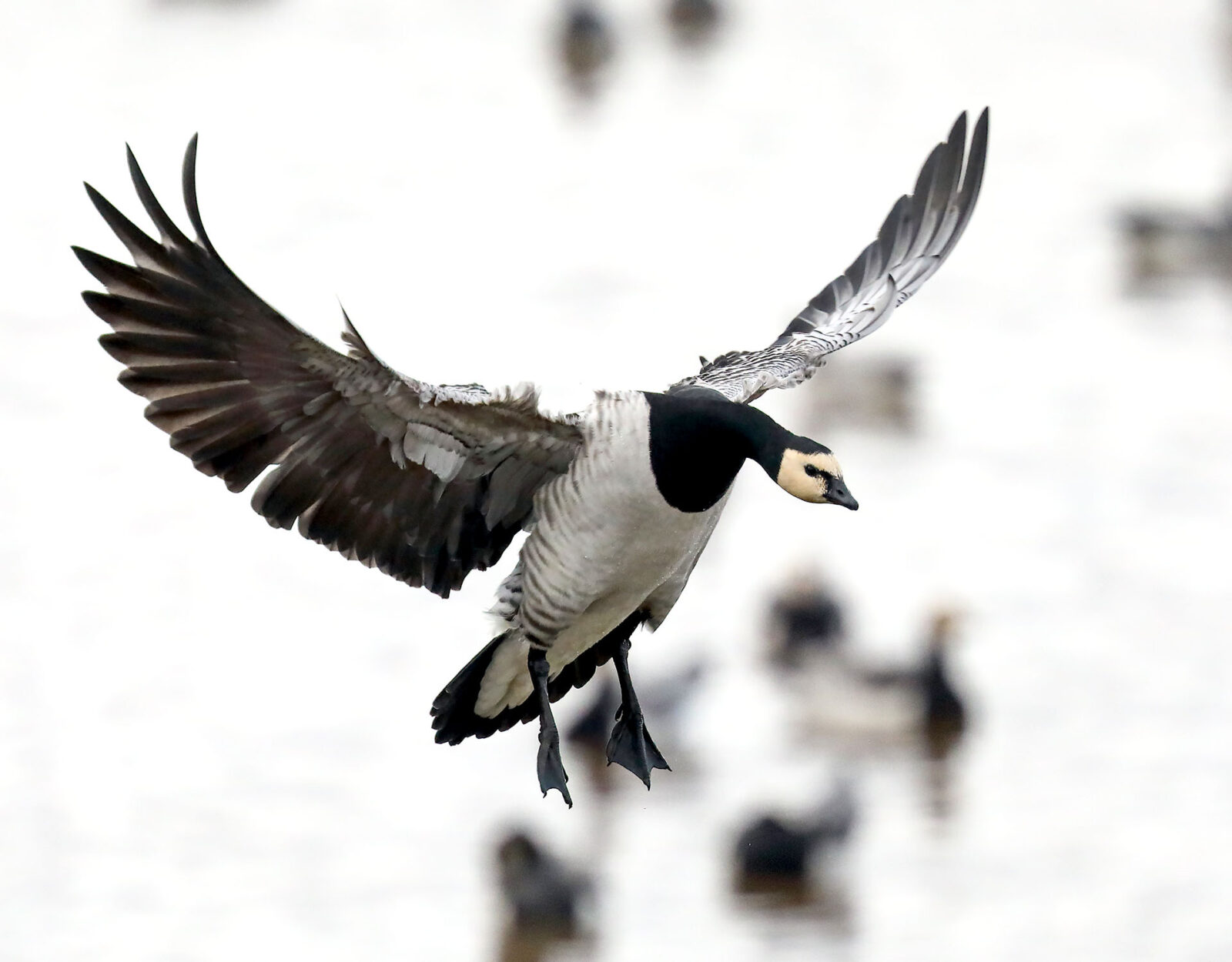
During the winter months, barnacle geese migrate to coastal regions of western Europe, including the British Isles and the Netherlands, where they feed on grasslands and agricultural fields including grass, wheat, and potatoes. Sweden and the Netherlands offer the best hunting opportunities.
One of the most interesting habits of the Barnacle goose is its unique nesting location, favoring high cliff faces to reduce predation from foxes and polar bears. While their nesting location reduces predation risk, it also increases the complexity of feeding logistics: Young barnacle geese cannot be fed by the adult birds in their nests. The feeding grounds are too far away. Instead, newly hatched birds must jump off the cliff and make their way to the foraging grounds.
Despite their population size and distribution, barnacle geese face threats such as habitat loss and hunting pressure, necessitating careful management to ensure long-term conservation.